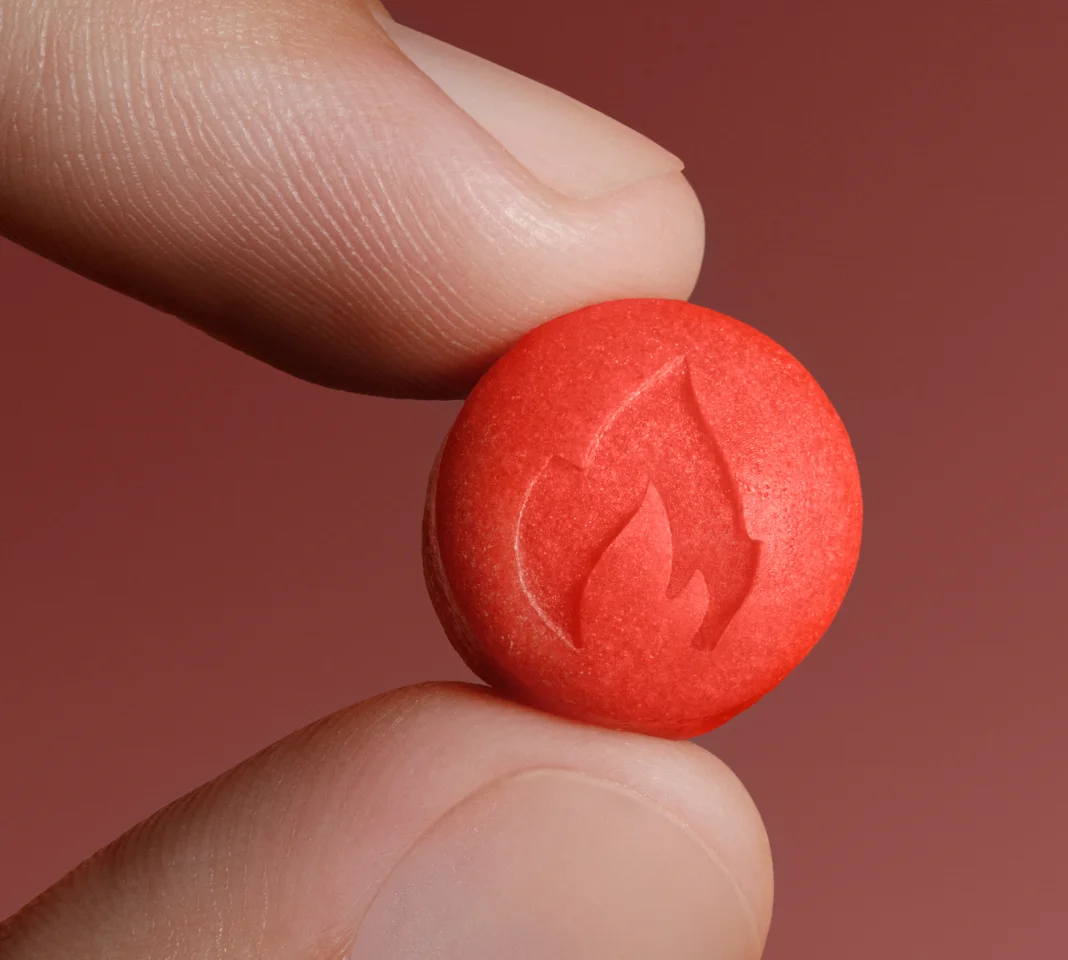Here's what we'll cover
Here's what we'll cover
Here's what we'll cover
Your concept of a yeast infection—if you have one—is probably shaped by mainstream commercials for yeast infection-fighting products targeted to women. Unfortunately, men can get yeast infections as well. Here are the symptoms and what you can do about it.
What is a penile yeast infection?
Yeast (specifically one called Candida albicans) is a form of fungus that naturally lives on our skin and inside our bodies in places such as the mouth, throat, digestive system, and vagina (CDC, 2019). Most of the time, we co-exist peacefully, and you have no idea it's even there.
But an overgrowth of that yeast can cause an infection, including a penile yeast infection (or candida balanitis), which is an infection of the glans, or head of the penis.
Overgrowth of Candida albicans in the mouth or throat results in the formation of white patches called thrush (or oral thrush) on the tongue or the walls of the mouth.
Symptoms of a penile yeast infection
Common symptoms of a penile yeast infection can include:
Redness, itching, or irritation
A thick white discharge that may be present in skin folds (Steckelberg, 2018)
A burning sensation during urination
Discomfort or itching during or after sexual activity (David, 1997)
Small white spots on the penis
A dry, peeling rash (Thaler, 2018)
Causes
Researchers have found that between 15-20% of men naturally have Candida on their penis. It is even more common in people who are uncircumcised, those with diabetes, and people who have a partner with a yeast infection (David, 1997). A penile yeast infection is often (but not always) caused by having sex with a partner who has a yeast infection.
Other things that can increase your chance of getting a penile yeast infection can include:
Poorly controlled diabetes (high blood sugar, a hallmark of diabetes, can cause yeast to overgrow on and in the body)
A weakened immune system (like if you have HIV or are receiving chemotherapy)
Frequent or recent use of antibiotics
Poor hygiene
You're more likely to get a penile yeast infection if you're uncircumcised (Morris, 2017), and a penile yeast infection can be the first sign of diabetes for some people, so it's important to be evaluated by a healthcare professional.
Will a penile yeast infection go away on its own?
A penile yeast infection can often clear up on its own, although it may also spread to other nearby areas of the skin, including the scrotum and buttocks (Thaler, 2018).
Yeast infections are contagious, so it's important to get treatment to avoid infecting or reinfecting any potential sexual partners with a yeast infection.
Any irritation or inflammation of the penis increases the chance that you have broken skin on your penis, which in turn increases your chances of contracting or transmitting STIs (sexually transmitted infections) during sexual contact (Anderson, 2011).
In certain at-risk people, Candida can cause a serious condition called invasive candidiasis, in which yeast can enter the bloodstream and infect other organs. People who are at risk of invasive candidiasis include people who have compromised immune systems (like people with HIV), diabetes, kidney failure or have a central venous catheter (CDC, 2019).
How long does a penile yeast infection last?
That depends. Some penile yeast infections may disappear without treatment, some may go away in about a week with medication (see "Treatments" below), and some untreated male yeast infections can linger, causing discomfort and potential complications.
What happens if a penile yeast infection goes untreated?
An untreated penile yeast infection might go away on its own, but it might also stick around, causing negative consequences.
You can transmit the yeast infection to sexual partners (Steckleberg, 2018).
In uncircumcised men, the inflammation of balanitis can spread to the foreskin, a condition called balanoposthitis (Perkins, 2020).
In uncircumcised men, balanitis can lead to phimosis, a condition in which the foreskin is too tight and can't be retracted or returned to its normal position over the penis head (Leber, 2020).
Treatments: What is the fastest way to get rid of a yeast infection?
The most common treatment for a penile yeast infection is antifungal cream, such as miconazole or clotrimazole, that you apply to the infected area once daily for one to three weeks or as directed by your healthcare provider. These treatments are typically available over-the-counter (Edwards, 2013).
Some types of antifungal treatments can also be prescribed by a healthcare provider. If your symptoms are particularly severe or your yeast infection returns, a healthcare provider might prescribe oral fluconazole and topical steroids (Edwards, 2013).
Prevention
Proper hygiene is always important, especially if you're not circumcised—the foreskin can allow for buildup of Candida yeast and subsequent infection. Use a mild soap and bathe regularly.
Because Candida can be passed between partners, if your partner is symptomatic, they should seek treatment as well to avoid reinfection.
DISCLAIMER
If you have any medical questions or concerns, please talk to your healthcare provider. The articles on Health Guide are underpinned by peer-reviewed research and information drawn from medical societies and governmental agencies. However, they are not a substitute for professional medical advice, diagnosis, or treatment.
References
Anderson, D., Politch, J. A., & Pudney, J. (2011). HIV infection and immune defense of the penis. American Journal of Reproductive Immunology, 65 (3), 220–229. https://doi.org/10.1111/j.1600-0897.2010.00941.x. Retrieved from https://onlinelibrary.wiley.com/doi/10.1111/j.1600-0897.2010.00941.x
Centers for Disease Control and Prevention. Candidiasis. (2019). Retrieved Aug. 10, 2020, from https://www.cdc.gov/fungal/diseases/candidiasis/index.html
Centers for Disease Control and Prevention. Invasive Candidiasis. Risk and Prevention. (2019). Retrieved Aug. 10, 2020, from https://www.cdc.gov/fungal/diseases/candidiasis/invasive/risk-prevention.html
David, S., Walzman, L., & Rajamanoharan, M. (1997). Genital colonisation and infection with candida in heterosexual and homosexual males. Genitourinary Medicine, 73 (5): 394-396. doi: 10.1136/sti.73.5.394. Retrieved from https://pubmed.ncbi.nlm.nih.gov/9534752/
Edwards, S. K., Bunker, C. B., Ziller, F., & van der Meijden, W. I. (2014). 2013 European guideline for the management of balanoposthitis. International Journal of STD & AIDS, 25 (9), 615-626. doi: 10.1177/0956462414533099. Retrieved from https://pubmed.ncbi.nlm.nih.gov/24828553/
Leber, M. (2020). Balanitis. Retrieved Sept. 11, 2020, from https://emedicine.medscape.com/article/777026-overview
Lisboa, C., Santos, A., Dias, C., Azevedo, F., Pina-Vaz, C., & Rodrigues, A. (2010). Candida balanitis: risk factors. Journal of the European Academy of Dermatology and Venereology : JEADV , 24 (7), 820–826. https://doi.org/10.1111/j.1468-3083.2009.03533.x. Retrieved from https://onlinelibrary.wiley.com/doi/10.1111/j.1468-3083.2009.03533.x
Morris, B. J., & Krieger, J. N. (2017). Penile Inflammatory Skin Disorders and the Preventive Role of Circumcision. International Journal of Preventive Medicine , 8 (1), 32. https://doi.org/10.4103/ijpvm.IJPVM_377_16. Retrieved from https://www.ijpvmjournal.net/article.asp?issn=2008-7802;year=2017;volume=8;issue=1;spage=32;epage=32;aulast=Morris
Perkins, O.S. & Cortes, S. (2021). Balanoposthitis. In: StatPearls [Internet]. Treasure Island (FL): StatPearls Publishing; Retrieved from https://www.ncbi.nlm.nih.gov/books/NBK553050/
Steckelberg, J. (2018, July 13). Yeast infection in men: How can I tell if I have one? Retrieved September 11, 2020, from https://www.mayoclinic.org/male-yeast-infection/expert-answers/f a q-20058464
Thaler, M., (2018, November 20). Men Get Yeast Infections, Too! Retrieved September 10, 2020, from https://www.onemedical.com/blog/get-well/male-yeast-infection










